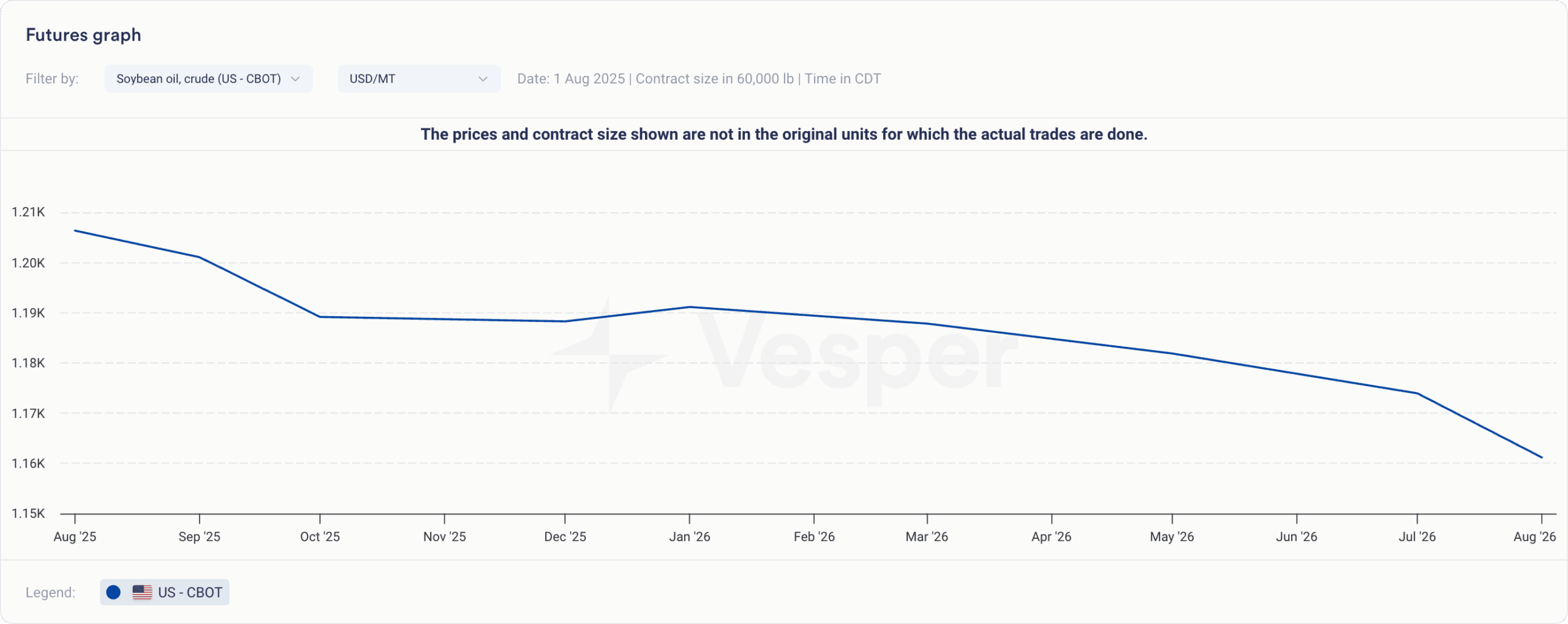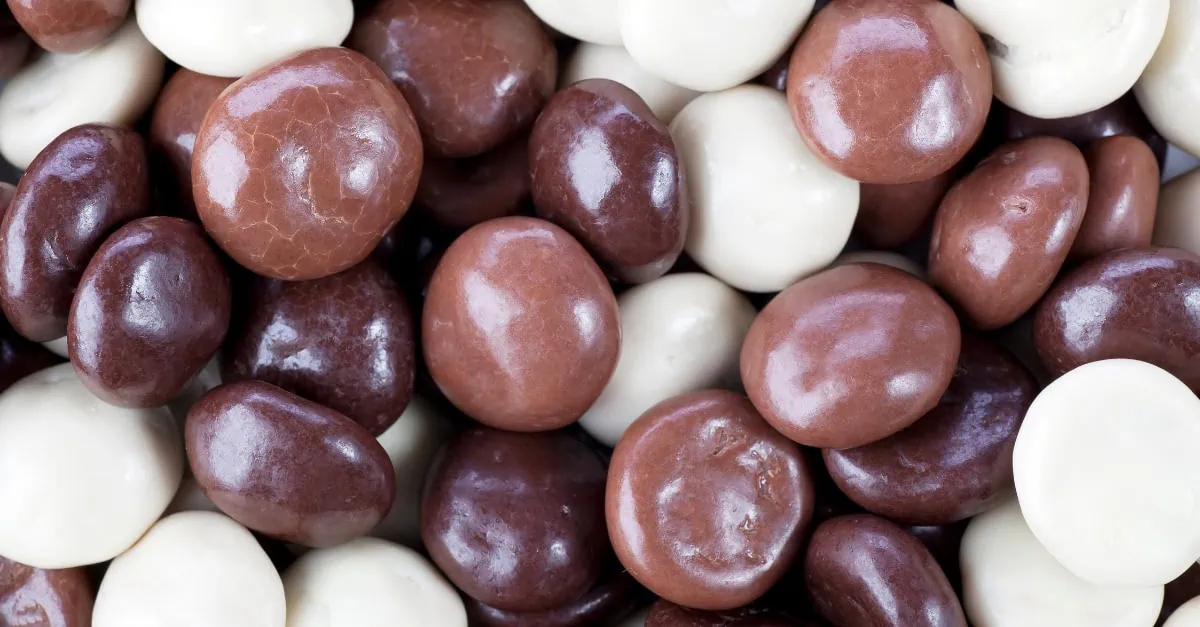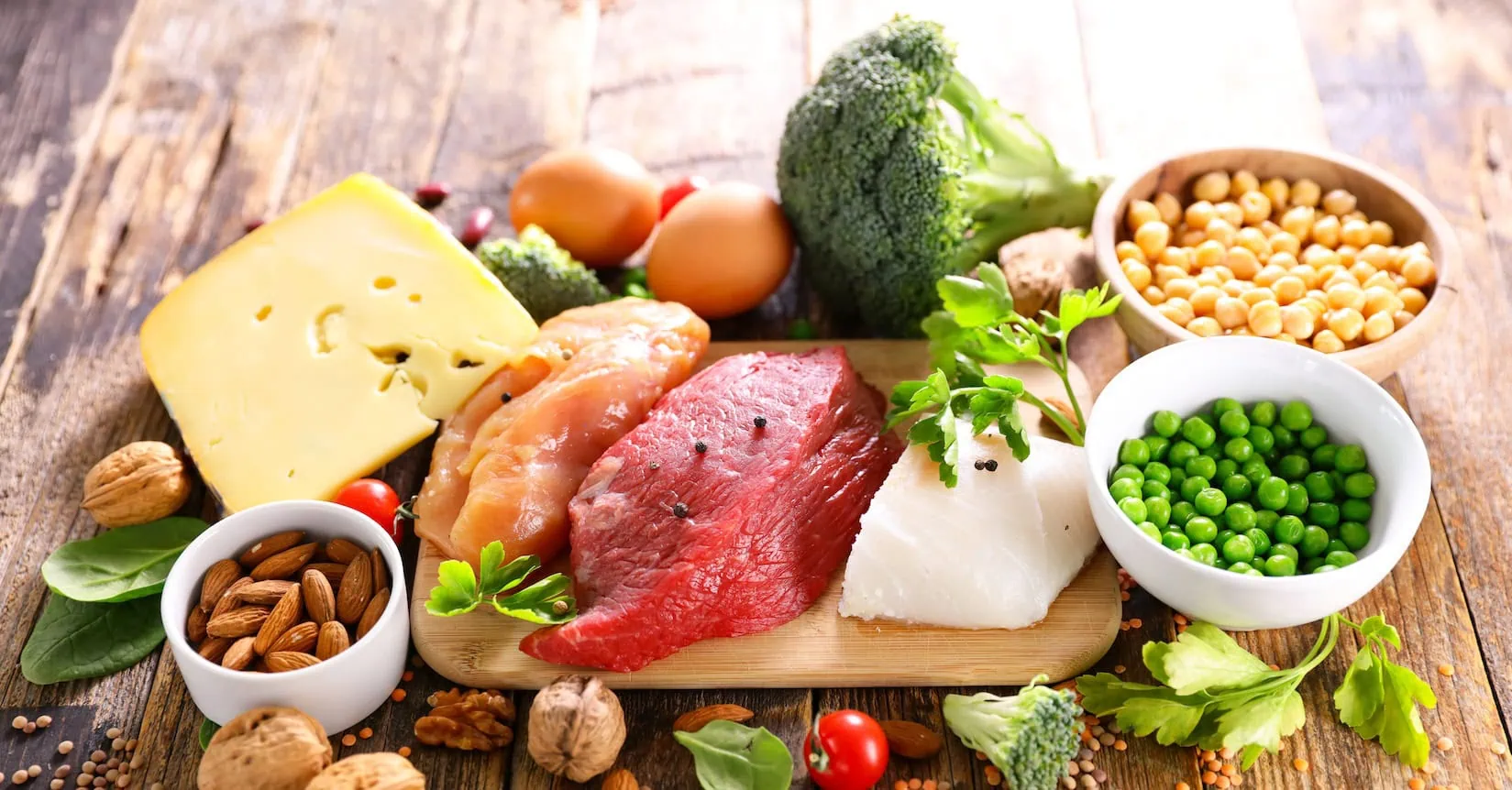In recent years, bakeries and FMCG manufacturers have faced a growing challenge: climate volatility, which is now central to sourcing strategy. Extreme weather, floods, droughts, heatwaves, and unseasonal frosts have increasingly disrupted global agricultural supply chains, directly impacting the availability, quality, and price of core baking ingredients.
While some categories like eggs and dairy remain more insulated due to controlled production systems, a wide range of essential bakery inputs are highly vulnerable to climatic conditions. These include grains and cereals, vegetable oils, sugar, cocoa, nuts, fruits, vanilla, and starches, all farmed in open environments and increasingly exposed to extreme and unpredictable weather.
From India’s monsoon swings affecting wheat exports to Brazil’s droughts reshaping global sugar and soy markets, procurement teams can no longer treat climate as a background variable. In 2026, it’s expected to play a bigger role than ever.
Key climatic themes emerging across global supply chains include:
- Persistent droughts reducing soil moisture and yield potential
- Erratic rainfall and shifting monsoons impacting planting and harvest timing
- Heatwaves undermining flowering, root formation, and oil/sugar content
- Rising disease and pest pressure, often linked to milder winters and changing precipitation
- La Niña–El Niño transitions increasing regional production volatility
- Water stress and soil degradation threatening ratoon crops and multi-year plantations
This article examines several key ingredients like sugar, grains and cereals, vegetable oil, cocoa, and nuts through a climate risk lens. For each, we explore how expected 2026 weather patterns could impact price volatility, and what procurement leaders should do now to build resilience.
Sugar: A global surplus meets regional weather shocks
The global sugar market is currently in flux. A surplus is projected for the 2025/26 season, supported by higher production in key growing regions like Brazil, India, and Thailand. On paper, this should ease pricing pressures. But for procurement leaders, the story doesn’t end there. Climate volatility introduces a critical layer of uncertainty.
First of all, Brazil is poised for another record cane crush, thanks to favorable dry harvesting conditions. Yet these same dry spells are raising long-term concerns. As of late July 2025, precipitation in São Paulo was 75% below average, according to HSAT, while Paraná saw an 83% shortfall. While this has supported efficient 2025 harvesting, the soil moisture deficit is worsening, threatening ratoon regeneration and cane yield potential heading into 2026.
“There’s a risk that if the dry weather continues into the end of the year, the 2026 harvest could start in a weakened position due to limited water reserves and stressed soil structures,” says HSAT.
While Brazil’s production estimates are favourable, the European Union’s sugar market is poised for a challenging 2025/26 marketing year (October 2025 to September 2026), with a projected production decline and evolving trade patterns, according to the Expert Group for the Common Organisation of Agricultural Markets. Sugar beet cultivation is expected to fall sharply, with sown area dropping by 10.6% to 1.351 million hectares, down from 1.512 million hectares the year before.
But beyond shrinking acreage, climate-driven disease pressure is emerging as a critical threat to yields. In central and southern Germany, up to 30% of sugar beet crops may be affected by aphid-transmitted viruses such as BMYV and BYV. These outbreaks are strongly linked to weather conditions, particularly milder winters that allow aphids to overwinter in greater numbers and earlier spring warmth that accelerates their activity.
Meanwhile, heat and rainfall extremes are compounding these pressures across Western Europe. In key sugar beet regions such as France, Belgium, the Netherlands, and the UK, persistent above-average temperatures and erratic precipitation are destabilizing growing conditions, July temperatures were 9–11% above normal in regions like Eastern England, Wallonie, and Vlaanderen, while precipitation deficits ranged from 15–25% in Belgium and Germany, undermining soil health and water availability.
Roger Bradshaw, Senior Investment Officer at Soft Commodity Consulting Ltd, highlights how this climate pattern undermines crop development: “Due to the extreme dry weather, the soil is too hard for the rain to penetrate. This phenomenon, where drought is followed by runoff-heavy rainfall, undermines root formation and sugar content, making 2026 yield and quality increasingly uncertain.”
Looking ahead, disease pressure may pose an even bigger threat in 2026, as climate trends show no sign of reversing. Continued mild winters, coupled with rising restrictions on pesticide use, could create a perfect storm for aphid proliferation. If current weather patterns persist or intensify, the EU sugar sector could face not only smaller crops, but biologically weaker ones, increasingly vulnerable to pests and pathogens.
Looking further east, rainfall deficits remain a critical issue across India and Thailand. For example, Maharashtra’s precipitation was down nearly 50%, while Thailand’s key provinces, Nakhon Ratchasima, Buri Ram, and Khon Kaen, saw 51–56% below-average rainfall. These countries jointly account for over 25% of global sugar production, and inconsistent monsoon behavior, partly tied to El Niño–La Niña transitions, could result in crop stress or even acreage reductions in 2026.
Procurement Takeaway
To help visualize this shifting outlook, take a look at the sugar price forecast below.
Vesper’s AI-powered models show that while global raw sugar prices (Sugar No. 11 – US ICE) are expected to stay relatively stable through 2026, European white sugar (Sugar No. 5 – EU ICE) is forecast to inch upward. This reflects the growing concern that, despite a projected global surplus, regional factors, particularly in Europe, could tighten supply more than expected.
That said, now may be a good moment to act. As Gabrielle Del’Arco, Manager of Data Research at Vesper, notes: “prices still hover below 17 US cents/lb, well under the historical average. Supply is strong, but underlying risks are building. Yields in Brazil are lower than last year, ethanol demand is rising with new blending policies taking effect in September, and stock levels remain thin. The scenario might change in the coming months. I think it’s a good price to buy at the moment.”
Grains and Cereals: Weather patterns drive diverging regional outcomes
The global wheat outlook for 2025/26 is increasingly shaped by weather contrasts. While Australia, Canada, and parts of the U.S. are seeing improved conditions, Black Sea exports, especially from Russia and Ukraine, are under pressure from erratic yields and slower harvests.
In Canada, spring wheat ratings have improved, with Saskatchewan now showing 68% in Good/Excellent condition. This supports a raised yield forecast to 57.1 bu/acre, slightly above the five-year average. Yet early-seeded fields in drier zones may still face irreversible damage. The U.S., in contrast, is seeing lower wheat production figures despite improving water availability.
Russia’s and Ukraine’s wheat export forecasts are slipping due to ongoing weather and logistical challenges, with some estimates falling below a combined 57 million tonnes, the lowest in four years. However, larger expected shipments from the EU, U.S., and Australia could help cushion global supply.
Turning to durum, the 2025 Canadian crop outlook has improved following recent rainfall, pushing quality ratings above the 10-year average. Yield expectations could climb from the current 31.9 bu/acre, with some analysts pointing to alignment with stronger seasons like 2022 and 2024.
In the EU, production is also expanding. A crop of 8.3 million tonnes is forecast,up 1.1 million from 2024, likely softening demand for Canadian exports. Italian bids remain near multi-year lows, reflecting limited upside in a supply-heavy market.
Shifting to barley, crop conditions in Canada are notably strong. Yields are projected to exceed the five-year average, supported by favorable July weather. Production is estimated at 8.22 million tonnes, slightly above last year, despite a 4% decline in seeded area. Meanwhile, the U.S. barley crop continues to underperform, with output forecast to fall 12% year-on-year. As EarthDaily Agro notes, this contrast underscores growing divergence across North American fields.
Despite robust Canadian output, malt barley premiums have weakened across global markets. This is being driven not only by improved crop quality but also by softening demand, particularly in Europe and Asia.
As for corn, the U.S. is on track for record output in 2025. Crop conditions remain strong at 73% Good/Excellent, and yield projections now exceed 185.5 bu/acre, translating to a harvest of over 16 billion bushels. Yet, prices remain under pressure. HSAT highlights that recent forecasts for continued favorable weather are further weighing on futures, which are hovering around $4.36½ for March 2026 delivery.
In Europe, drought-related stress is hurting corn production, but increased availability of alternative feed grains has so far prevented any sharp upward price movements.
Finally, oats are entering the 2025/26 cycle with a tight supply base. Yields in Canada are expected to exceed average slightly, at 89.7 bu/acre, but projected ending stocks remain near historically low levels of 400,000 tonnes. While most buyers are well covered through fall, any harvest disappointment could trigger a renewed rally. According to LeftField, market participants should prepare for potential post-harvest tightness if weather variability continues.
Procurement Takeaway
From a procurement perspective, regional crop variability and shifting climate signals are already shaping the grain sourcing landscape for 2026.
In wheat, pricing remains relatively soft for now, but Vesper’s AI driven forecast for EU Milling Wheat and U.S. Hard Red Winter Wheat suggests a slow climb through early 2026. With export instability in the Black Sea and narrowing spreads between U.S. and Canadian grades, Q3 2025 is shaping up to be a valuable window for locking in forward contracts.
For barley, the story remains mixed. Canadian conditions are strong, but U.S. production is lagging. As EarthDaily Agro emphasizes, global malt demand remains subdued. However, a potential recovery in Asian exports could lift prices later in the year, making Q4 2025 a timely moment for initiating coverage.
Corn presents a tactical buying opportunity. With record U.S. yields on the horizon and recent favorable weather trends highlighted by HSAT, prices remain under pressure. Procurement teams may benefit from leveraging short-term dips to cover immediate needs while keeping a close eye on late-season weather and yield data. Looking ahead, prices are expected to slightly decrease moving into 2026, further supporting a cautious but opportunistic buying strategy.
Finally, oats remain structurally tight. While yields are slightly above average, low stocks leave little margin for error. Phasing in purchases from late Q3 onward will help mitigate risk heading into 2026, particularly for buyers requiring consistent quality and volume.
Vegetable Oils: Climate extremes challenge yield stability
As the second half of 2025 unfolds, vegetable oil markets are increasingly shaped by disruptive and regionally specific weather patterns. While production remains relatively stable in some areas, climate anomalies, from droughts to excessive rainfall, are emerging as critical forces that may undermine yields and oil content as early as Q1 2026. Palm, soybean, rapeseed, and sunflower oil markets are all being tested by these developments, each with its own set of stress factors.
In Southeast Asia, palm oil production continues to benefit from dry harvesting conditions, but underlying weather signals are turning more concerning. According to HSAT, July precipitation in key Indonesian and Malaysian zones, such as Riau, Sumatera Utara, Sabah, and Sarawak, was between 48–68% below normal, while temperatures were 1–3.6% above historical averages. Though these conditions have supported recent output, they are now rapidly depleting soil moisture, raising concerns over oil palm stress and potential yield drag as early as the start of 2026.
Turning to soybean oil, weather volatility is playing out across both hemispheres. U.S. crop conditions remain solid for now, but highlights sharply contrasting patterns in South America. Argentina experienced July rainfall that surged to 153–344% above average in core provinces like Córdoba and Buenos Aires, while southern Brazil faced pronounced dryness. These opposing extremes may disrupt planting and flowering cycles later this year, creating uncertainty around global soybean supply heading into next season.
Meanwhile, rapeseed oil markets are already encountering direct impacts from excess rainfall. In central Europe, harvest delays are mounting due to persistent storms, especially in Germany and France. HSAT reports 38–60% above-average rainfall across major EU rapeseed regions. These conditions not only hinder field operations but also risk diluting oil content and affecting seed quality. In the UK, temperatures were 10–12% above normal in July, potentially influencing maturity and oil recovery. In Eastern Europe, Ukraine’s harvest is trailing last year’s pace, and average yields are down by 25%, following earlier adverse weather events.
Finally, sunflower oil is contending with similar climate-driven stress. Although overall acreage has expanded, prolonged dryness and heat across Ukraine are beginning to threaten seed development. HSAT data shows July rainfall deficits exceeding 50% in key oblasts like Zaporizhia and Donets’k, with local temperature anomalies reaching up to 7% above normal. These cumulative stresses have led APK-Inform to lower Ukraine’s sunflower output forecast by nearly 1 million tonnes to 13.65 mmt. This shortfall could begin to affect oil yields during Q1 2026 crushing.
Across all major oilseed crops, the message is clear: weather is no longer a background variable, it is actively reshaping supply chains, crop quality, and market fundamentals heading into 2026.
Procurement Takeaway
Buyers should be aware that we are currently experiencing strong demand for palm oil from India and China, which is expected to support palm oil prices. Additional supportive factors include tighter Indonesian supply in June, increasing domestic consumption in Indonesia, and a favorable discount for palm oil relative to soybean oil.
Early coverage for Q1–Q2 2026 is recommended, especially while prices remain below the long-term average.
Furthermore, buyers should keep in mind that August may be a volatile month for soybean oil due to weather-related news. Also, markets will be closely watching updates on the U.S.-China trade deal, which will influence the outlook for U.S. soybean exports. In September, prices are expected to come under pressure due to the U.S. harvest. Good time to make some purchasing. Also, currently September and October prices look interesting for buyers. However, in Q4, we anticipate a recovery, with CBOT soybean oil prices potentially exceeding $1,200/mt, driven by increased demand from the biodiesel sector.

Regarding rapeseed oil, buyers should note that harvesting in some European countries (e.g. Germany) has been delayed due to heavy rains, causing it to overlap with Canada’s harvest. This overlap is likely to push spot prices lower in August. From November onward, prices are expected to rise due to a tighter carryover this year and anticipated lower exports from Ukraine, meaning July and August might be a good time to lock in some volumes.
For sunflower oil, weather risks may support prices in August. APK-Inform recently reduced its forecast for Ukrainian sunflower production by 1 million metric tons (MMT), and further reductions in other regions are possible. Harvest pressure is expected in September and October (good time for buying), followed by a likely price recovery beginning in November.
In short, while spot pricing in some vegetable oil categories remains favorable, procurement teams should prepare for shifting fundamentals and latent climate pressures. Staying close to harvest progress and updated export flows will be key to managing cost and availability heading into 2026.
Cocoa: Powder market faces double pressure from weather and supply chains
After two years of historic volatility, cocoa markets may be entering a correction phase, but for bakery buyers, the real risk remains concentrated in cocoa powder, where prices are elevated and weather-linked pressures are intensifying.
In West Africa, the world’s top cocoa-producing region, a critical development has emerged. While June rainfall was promising, CRA’s July 27th weather report shows that rainfall declined sharply in July across Côte d’Ivoire and Ghana, coinciding with the pod survival stage. This timing is crucial, as it affects the size and viability of the main 2026 crop.
Now, industry field surveys confirm that flower and cherelle mortality rates exceeded expectations, pointing to a likely 10% production decline in the 2025/26 harvest, a sharp reversal from earlier forecasts of growth. This trend is confirmed by Martijn Bron, who notes: “Worries about supply always arise quickly once something isn’t ideal weather-wise, especially when there is no room for error with still a historically tight stocks-to-usage ratio.”
The structural risks don’t end there. Bean quality in the current Ivorian mid-crop is deteriorating. Grinders report higher acidity, reduced cocoa butter content, and a spike in free fatty acid (FFA) levels, up to 12% versus the standard 1.75%. This has severely reduced grinding efficiency. As a result, Ivory Coast grinders have voluntarily cut cocoa bean purchases by 20% since January, operating with minimal stock and reducing processing volumes.
Globally, cocoa grind data shows how this bottleneck is affecting supply:
- Europe’s Q2 grind fell 7.2%, hitting a five-year low.
- Asia’s grind dropped 16.3%, the weakest since 2017.
- Malaysia’s grind plunged 22% quarter-on-quarter.
All of this is converging into a tight powder market. Processors are producing less powder due to poor bean yields and reduced butter demand, while chocolate manufacturers, having substituted expensive butter with vegetable oils, are now demanding more cocoa powder to maintain taste and color. The result: a demand-side squeeze amid a shrinking supply base.
Cocoa powder prices remain near record highs, above $10,000/ton in Europe and approaching $9,000/ton in the U.S., according to Commodity Risk Analysis. Supply alternatives like carob or wheat-based substitutes are emerging, but for many bakery applications, cocoa powder remains essential due to its functional roles in flavor, color, texture, and leavening.
Looking ahead, speculative positioning in the cocoa futures market is still light, leaving room for rapid upside movement if the weather outlook worsens or supply forecasts are downgraded further.
Procurement Takeaway
Procurement managers should closely monitor short-term weather in Côte d’Ivoire and Ghana. If August–September rains fail to materialize, concerns over the 2026 harvest will likely re-enter the market. But beyond weather, cocoa prices are also being shaped by other factors. As Martijn Bron, cocoa expert, mentions in his latest cocoa market analysis: “In the meantime, consumption is slowing down, origin inventories are building, and the speculative net long on cocoa is rapidly unwinding.”
With Vesper’s AI models forecasting elevated powder prices well into early 2026 (see figure below), it may be prudent to phase in purchases through Q4 2025, particularly if you rely on cocoa powder for cakes, cookies, and fillings. A staggered approach offers flexibility, while guarding against renewed disruption.
Nuts: Weather-limited crops tighten 2026 outlook, especially for macadamia and almond
Among bakery ingredients, nuts remain one of the most climate-sensitive categories. From flowering to harvest, nut trees rely on stable seasonal cycles, making them vulnerable to extreme or poorly timed weather events. The 2025 season has already revealed the consequences, particularly in macadamia and almond-producing regions.
Macadamia crops in South Africa, Kenya, and Australia have been hit hard. South Africa’s crop has dropped to approximately 85,000 metric tons in-shell (NIS), while Kenya and Australia are each producing around 42,500–45,000 metric tons, well below recent averages. According to the Global Trading Tree Nuts Report (July 31, 2025), these reductions are directly tightening availability in snacking grades such as Style 0, Style 1, Style 2, and Style 4L, which are commonly used in premium bakery and snack products.
Meanwhile, ingredient-focused styles (Style 5 and 6) remain broadly available, for now. The U.S. remains largely sidelined due to the upcoming 30% import tariff on South African macadamias, taking effect August 1. This has led to cautious, hand-to-mouth buying behavior from U.S. ingredient buyers, particularly given the long lead and transit times from African origins, now averaging nearly three months. While ingredient styles are still attractively priced, this calm may not last. Once U.S. buyers re-enter the market in earnest for 2026 coverage, availability could tighten rapidly.
On the almond side, the USDA’s Objective Estimate for California almonds in 2025 came in at 3.0 billion pounds, higher than expected and well above the subjective estimate and 2024 totals. Despite this, the number remains under scrutiny. Processors continue to cite the risk of late-season heat events, recalling significant harvest losses in 2024 due to pre-harvest heatwaves.
Although 2025 weather appears more stable so far, the longer-term trend toward hotter, drier summers in California suggests that climate volatility is now a structural factor in almond sourcing. Additionally, weaker global shipments this season have led to higher carryover stocks, currently estimated at 450–500 million pounds, providing temporary relief to buyers. However, this cushion could vanish quickly if weather affects the 2026 bloom or early nut set, as has become increasingly common.
Procurement Takeaway
Macadamias and almonds are entering the 2026 buying cycle under markedly different conditions.
Vesper’s forecast shows macadamia prices recovering into late 2025, driven by short crops in South Africa, Kenya, and Australia, compounded by the new 30% U.S. import tariff. According to Global Trading, snacking styles are already in limited supply, while ingredient styles remain accessible, but this balance may shift. Buyers should strongly consider securing Style 5 and 6 volumes soon, especially for 2026 bakery applications, before hand-to-mouth strategies shift toward larger forward contracts.
Almond prices, in contrast, remain subdued thanks to a larger-than-expected U.S. crop and elevated carryover stocks. This provides an attractive near-term buying opportunity, especially for premium grades like NPX. However, sourcing teams should remain vigilant. A single unfavorable weather event in early 2026 could quickly reverse today’s pricing advantage. Staggered coverage through Q4 2025 may offer the best balance of cost and risk.
Final Thoughts
As climate risks are deeply embedded in global agricultural systems, procurement strategies must evolve to account for mounting weather-driven volatility across key bakery ingredients. While current market signals provide tactical buying opportunities in some categories, the outlook for 2026 remains highly dependent on climatic developments in the coming months.
This blog is based on market analyses published in July 2025. To stay informed about how evolving weather patterns are shaping crop developments and pricing risks across grains, oils, sugar, cocoa, and nuts, please visit our Market Analyses page for the latest insights.



